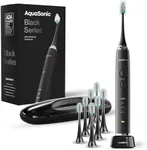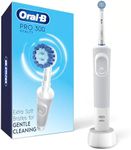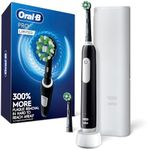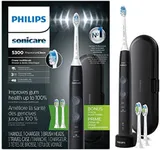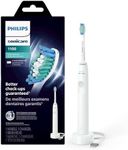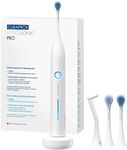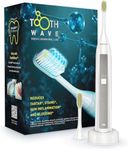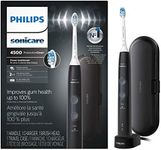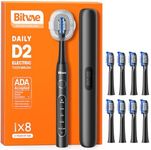Buying Guide for the Best Electric Toothbrush For Braces
Choosing the right electric toothbrush when you have braces is important for keeping your teeth and gums healthy. Braces can make it harder to clean your teeth properly, so you need a toothbrush that can reach around wires and brackets, remove plaque effectively, and be gentle on your gums. When shopping, focus on features that make brushing easier and more effective for orthodontic care. Understanding the key specifications will help you find a toothbrush that fits your needs and keeps your smile healthy throughout your orthodontic journey.Brush Head DesignThe brush head design refers to the shape and size of the part of the toothbrush that holds the bristles. For people with braces, a smaller, round or orthodontic-specific brush head is important because it can maneuver around brackets and wires more easily, reaching spots that a standard brush might miss. When comparing brush heads, look for those labeled as 'orthodontic' or 'compact.' If you have a smaller mouth or complex braces, a smaller head will help you clean more thoroughly. If you prefer a quicker clean and have fewer obstacles, a slightly larger head may be suitable, but always ensure it can reach all areas comfortably.
Bristle Type and SoftnessBristle type and softness describe the material and flexibility of the bristles on the brush head. For braces, soft or extra-soft bristles are best because they are gentle on your gums and won't damage your brackets or wires. Hard bristles can cause irritation or even harm your orthodontic appliances. If your gums are sensitive or you are new to braces, always choose extra-soft bristles. If you have healthy gums and want a bit more scrubbing power, soft bristles are still safe and effective. Avoid medium or hard bristles, as they are not recommended for braces.
Cleaning ModesCleaning modes are the different settings an electric toothbrush offers, such as 'sensitive,' 'gum care,' or 'deep clean.' These modes adjust the speed and movement of the brush to suit different needs. For braces, a 'sensitive' or 'gum care' mode can be helpful to avoid discomfort and protect your gums, while a 'deep clean' mode can help remove more plaque if you need extra cleaning power. If you have sensitive teeth or gums, prioritize a toothbrush with gentle modes. If you want versatility, look for a model with multiple modes so you can switch as your needs change.
Timer and Pacer FeaturesA timer and pacer are features that help you brush for the recommended two minutes and remind you to move to different areas of your mouth. This is especially useful with braces, as it ensures you spend enough time cleaning around all the brackets and wires. Some toothbrushes vibrate or beep every 30 seconds to prompt you to change quadrants. If you often rush your brushing or have trouble keeping track of time, a toothbrush with a built-in timer and pacer will help you develop better habits and ensure a thorough clean.
Battery Life and ChargingBattery life and charging refer to how long the toothbrush can be used before needing to be recharged and how it is powered. Longer battery life means you can use the toothbrush for days or weeks without recharging, which is convenient if you travel or don't want to charge often. Some brushes use replaceable batteries, while others have built-in rechargeable batteries. If you travel frequently or dislike frequent charging, look for a model with a long-lasting battery. If you mostly brush at home, battery life may be less important, but a reliable charging method is still key.
Pressure SensorA pressure sensor is a feature that alerts you if you are pressing too hard while brushing. This is important for people with braces because too much pressure can damage your gums, brackets, or wires. The sensor may cause the brush to slow down, vibrate, or light up as a warning. If you tend to brush vigorously or are worried about damaging your braces, a pressure sensor can help you maintain a gentle, effective brushing technique.
